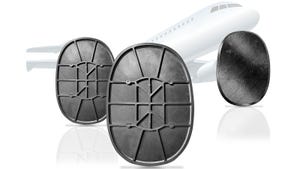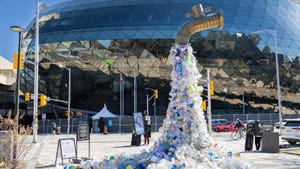Cannon Introduces Technology for Lightweight GFR-PU Structural, Aesthetic Composites
The flexible turnkey process is earmarked for serial production of complex exterior parts for automotive, mass transportation, and industrial applications.
November 28, 2023
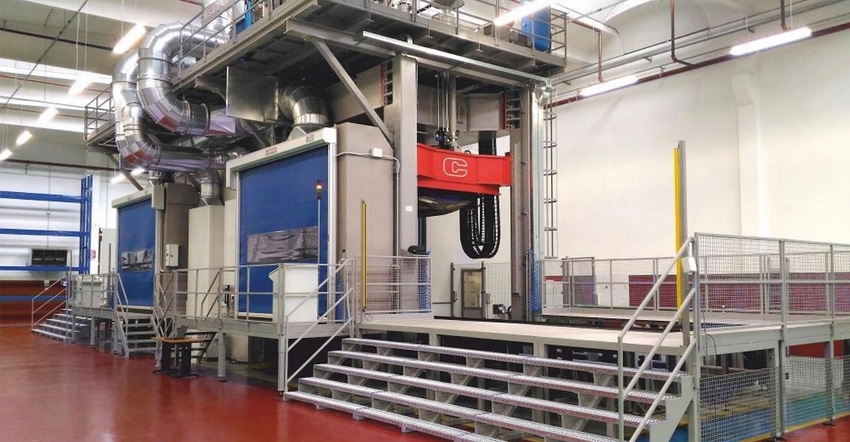
At a Glance
- One-step solution for GFR-PU serial parts production
- Can be used for enhancing structure of previously thermoformed aesthetic polymer components
- Turnkey Interwet-LFI mass production line can be provided
Cannon Afros recently showcased its Interwet-Long Fiber Injection (LFI) technology to produce glass-fiber-reinforced polyurethane (GFR-PU) parts at the CAMX 2023 show in Atlanta, GA. The automatic, highly flexible process accommodates a range of fillers with a fiber volume fraction (FVF) up to 50%.
“Interwet-LFI technology offers a one-stop-shop solution for GFR-PU serial parts production. At its core is our innovative, proprietary, and specially adapted self-cleaning Free Pouring Laminar SR L-shaped high-pressure mixing head,” explained Dario Pigliafreddo, key account manager at Cannon Afros. “A vacuum pulls continuous dry roving from creels through a fiberglass chopper positioned above the head while a second vacuum draws the chopped long- or short-glass fibers into the mixing chamber. Inside it is wetted with a two-component polyurethane formulation, creating a homogenous blend that is sprayed into a heated mold, then closed until polymerization is complete. For OEMs and Tier suppliers, Interwet-LFI is a time-saving, attractive alternative to production processes based on glass mats or chopped glass fiber pre-blended with polyol,” said Pigliafreddo.
Variable fiber load and length
For optimal tensile strength, fiber loading and reinforcement length ranging from 12.5 to 100 mm can be adjusted during the spraying cycle. Furthermore, deflectors near the spray head’s nozzles control fiber orientation. This allows a more uniform lay-down when manufacturing shallow or deep-ribbed thin-walled parts as well as thicker load-bearing components.
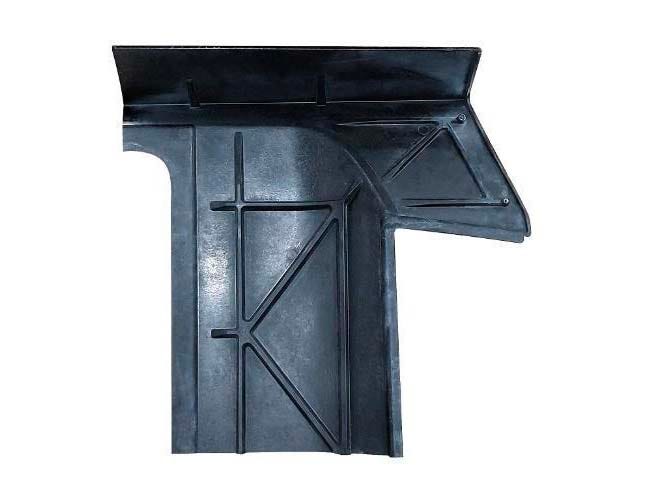
Interwet-LFI technology produces parts using a range of fillers and fiber volume fraction up to 50%.
Structural and semi-structural GFR-PU parts and components for a wide range of applications — not requiring high surface aesthetics — can be produced utilizing the Interwet-LFI process alone. It is suited for civil engineering applications, such as manhole covers, frames, and chambers, all much lighter than their steel counterparts. This reduces the need for heavy installation equipment, saving time, labor, and cost.
Aesthetic enhancement of polymer parts
The Interwet-LFI process can also be used for enhancing the structure of previously thermoformed aesthetic polymer components. Spraying a GFR-PU layer onto the reverse side of external body panels for roofs and side and rear panels for buses, trucks, and agricultural vehicles adds stiffness, strength, and durability.
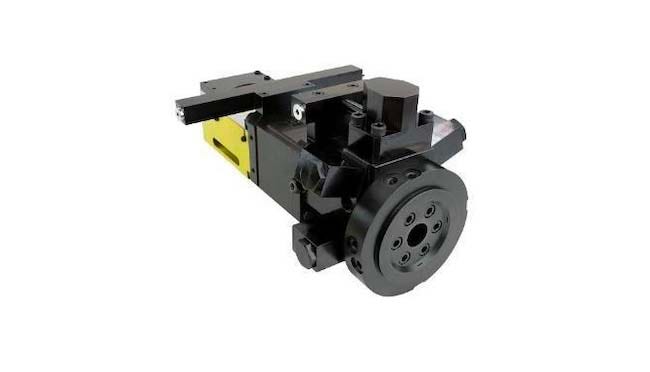
Deflectors near the spray head’s nozzles enable control of fiber orientation in GFR-PU components.
Combining in-mold barrier coating (IMC) and Interwet-LFI technology makes it possible to obtain multi-colored parts with high surface aesthetics and chemical and mechanical properties while bonding to the PU substrate — all in a single process. A self-releasing primer, which eliminates the need for mold release agents, is sprayed onto the open mold, followed by a barrier coating. Next, the GFR-PU formulation is injected and the mold is closed. After curing, the part is de-molded, displaying a surface aesthetic that can be painted.
Cannon provides customers with a complete turnkey Interwet-LFI mass production line including raw material storage, the latest generation of dosing units, and patented mixing heads, robotics, in-mold coating equipment, molds, presses and thermoforming machines, post-curing jigs, and eco-cleaner to filter, recirculate, and re-use cleaning agents.
About the Author(s)
You May Also Like



